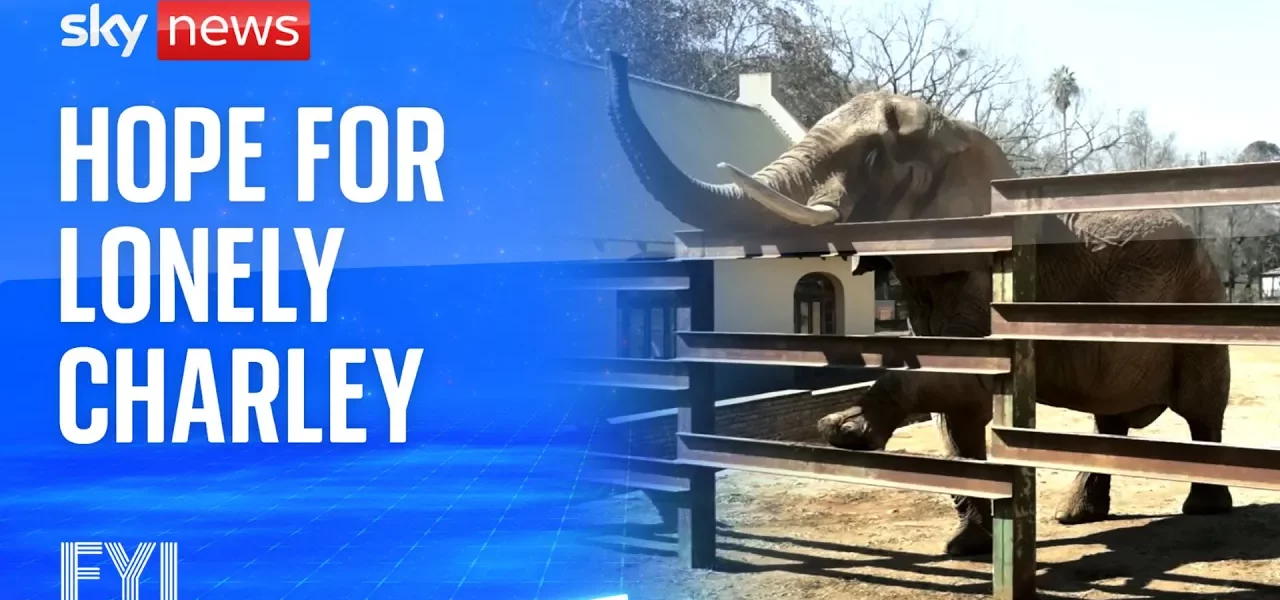Charlie the Elephant’s Journey Back to the Wild

Discover the inspiring story of Charlie, a once-captive elephant, as he embarks on a transformative journey from the confines of a South African zoo to the vast expanses of a wildlife reserve, highlighting critical issues in animal welfare and conservation.
Introduction
Charlie the elephant’s story is one of resilience and hope, showcasing the complex relationship between humans and wildlife. Born in Zimbabwe, Charlie’s early life took a drastic turn when he was captured and relocated to a circus in South Africa at just two years old. After years of captivity, his existence became increasingly isolated and devoid of joy, leading to significant concerns from animal welfare advocates. This article explores Charlie’s journey, the challenges he faced, and the monumental decision that allowed him to reclaim his place in the wild.
The Life of Charlie the Elephant
Early Years in Zimbabwe
Born in the wilds of Zimbabwe, Charlie’s early life was filled with the natural experiences all elephants should enjoy—roaming vast landscapes, socializing with family and herds, and engaging in instinctive behaviors. Unfortunately, at the tender age of two, he was captured, marking the beginning of a challenging life in captivity.
Life in Captivity
Charlie’s relocation to a circus in South Africa deprived him of the social bonds and environmental richness that elephants thrive on. Over the years, he was moved to the National Zoo, where he initially lived with other elephants. However, as time passed, he lost his companions, leading to a profound sense of loneliness. The zoo staff attempted to ensure his well-being, but the absence of social interaction left Charlie as a solitary figure, often described as the “lonely elephant.”
The Call for Change
Animal Welfare Concerns
As concerns for Charlie’s well-being grew, animal welfare groups began advocating for his release. They argued that living in isolation was detrimental to his mental and physical health. Expert veterinarians assessed Charlie’s condition, noting his disinterest in food and lack of engagement with his surroundings. This assessment highlighted the urgent need for a change in his living conditions.
The Groundbreaking Decision
After extensive discussions and mounting pressure from animal rights advocates, the South African government made a landmark decision. Charlie was to be moved to a larger wildlife reserve, where he could eventually be reintegrated into the wild. This decision marked a significant turning point not only for Charlie but also for ongoing conversations about animal captivity and welfare.
The Relocation Process
Planning and Preparation
Relocating a 5-ton elephant like Charlie was no small feat. It took weeks of meticulous planning and preparation to ensure a safe transition. The zoo staff worked closely with experts to design a specialized crate that would accommodate Charlie during transportation while minimizing stress.
Training for Transition
Training Charlie to enter the crate involved patience and care. Staff used positive reinforcement to help him acclimate to the new structure, ensuring he felt comfortable and secure. This careful approach was crucial for a successful relocation.
The Moment of Release
The moment Charlie was released into his new environment was nothing short of magical. Observers watched in awe as he took his first steps outside, cautiously exploring the unfamiliar terrain. With each step, Charlie began to rediscover the essence of being wild—a process that was both thrilling and heartwarming.
Embracing the Wild
Transitioning to Freedom
As days turned into weeks, Charlie’s transformation became evident. He began to exhibit more natural behaviors, exploring his surroundings with increasing confidence. The African savannah, with its diverse flora and fauna, offered him new experiences that he had long been deprived of. Each encounter became a moment of discovery, reminding us of the beauty of wildlife in its natural habitat.
The Role of Zoos and Wildlife Conservation
The debate surrounding zoos and the ethical treatment of wildlife continues to evoke strong opinions. While some argue that zoos play a crucial role in conservation and education, others, including Will Travers of the Born Free Foundation, contend that large mammals like elephants should never be confined to small enclosures. The contrasting perspectives prompt a necessary dialogue about the future of wildlife conservation:
- Zoos can provide essential care and protection for endangered species.
- Captivity can lead to psychological distress in animals.
- Wildlife reserves offer a more natural environment for rehabilitation.
- Public education should focus on preserving natural habitats rather than showcasing animals in captivity.
Conclusion
Charlie the elephant’s journey back to the wild serves as a powerful reminder of the importance of animal welfare and the need for thoughtful conservation efforts. His story inspires us to reflect on our relationship with wildlife and consider the implications of captivity. As Charlie continues his journey towards full reintegration into the wild, we are reminded that wildlife belongs in its natural habitat. We must advocate for the protection of such habitats and support initiatives that prioritize the well-being of animals like Charlie. For those interested in learning more about wildlife conservation efforts, be sure to check out our related articles on the importance of preserving natural ecosystems and the ongoing debate about zoos and animal rights.
“`




